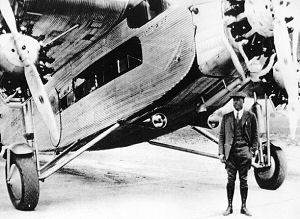


New Site at Dakota PathwaysSky ActionWeather influences everything people do. The
health of every person on the planet is directly affected by changes
in the weather. The sun burns millions of the earth’s human
inhabitants every day. During a wild winter ice can lead to all
kinds of mishaps, from broken hips to multi-car crashes. Tornadoes,
hurricanes, blizzards and floods hurt and kill thousands of people.
The movement of celestial bodies has been more dependable; they have been the basis of navigation, time telling, and myth making. The Sun marks days and hours; the Moon, months. Planets move across the sky, changing positions with each day. Early explorers used constellations and other objects to guide themselves through unknown oceans. Without careful observation of planets and stars, physics discoveries that have shaped how people think would never have been discovered. Galileo, Newton and Einstein had to have these objects to construct their physical theories. Ancient cultures from all over the world used stars and planets as a basis of myths about creation and the natural world around them. The Romans called “the red planet” Mars, their god of war. A Cherokee myth has the sun, moon and earth as characters in a family squabble. For most people, birds and skies are inextricably intertwined. Like clouds, the sun, moon and stars, many animals are connected to the skies. Birds, bees, bats and butterflies, among thousands of others, fly through the skies. Most evolutionary biologists believe that birds evolved from dinosaurs. Today, there are more than 9000 species of birds all over the world. Though a few different species of birds don’t fly—penguin and ostrich, for example—most do. To fly, birds rely on special physical adaptations like hollow bones and feathers. With neither bones nor feathers, bees still have wings that propel them. Of the 20,000 species worldwide, the honeybee is the most familiar to Americans. Honeybees pollinate all kinds of plants and create honey. In the United States California, Florida and South Dakota are tops in commercial honey production. Like bees, bats don’t have feather, but they have bones and hair. They are the only mammals that fly. There are almost 9000 species of bats that live on all continents but Antarctica. Of these only three drink blood. Most bats eat insects, particularly mosquitoes. Bats also eat butterflies. More than 20,000 species of butterflies and moths live around the world; around 3500 in North American. Smaller butterflies can live only as long as a week. Monarchs might live up to nine months. Pilots People fly too. From the Wright Brothers 1903
flight to present, when thousands of planes and tens of thousands of
passengers fly in a day, people have been fascinated with flight.
Like George and Wilbur, this fascination led many men and women to
learn to fly. In 1921, Bessie Coleman earned her pilot’s license,
becoming the first African-American to do s
|
 o. She moved to France for
pilot training because of racism in America. Lt. General Benjamin
Davis, the first African-American general in the U.S. military,
suffered under a racist system, but persevered to graduate from West
Point and lead the famed Tuskegee Airman in World War II before rising
to general later in his honor-filled career. Closer to home, Joe Foss
shot down 26 enemy planes over the Pacific during WWII; he was
decorated as one of the country’s best aces. In the skies over Europe
and North Africa, former senator George McGovern flew 35 missions in
his faithful B-24, Dakota Queen.
o. She moved to France for
pilot training because of racism in America. Lt. General Benjamin
Davis, the first African-American general in the U.S. military,
suffered under a racist system, but persevered to graduate from West
Point and lead the famed Tuskegee Airman in World War II before rising
to general later in his honor-filled career. Closer to home, Joe Foss
shot down 26 enemy planes over the Pacific during WWII; he was
decorated as one of the country’s best aces. In the skies over Europe
and North Africa, former senator George McGovern flew 35 missions in
his faithful B-24, Dakota Queen.

